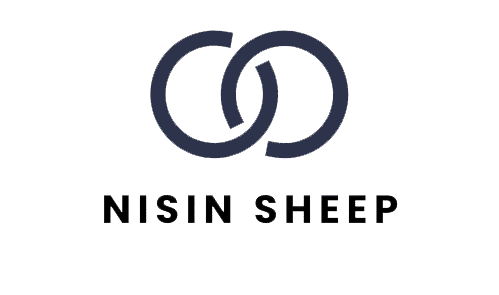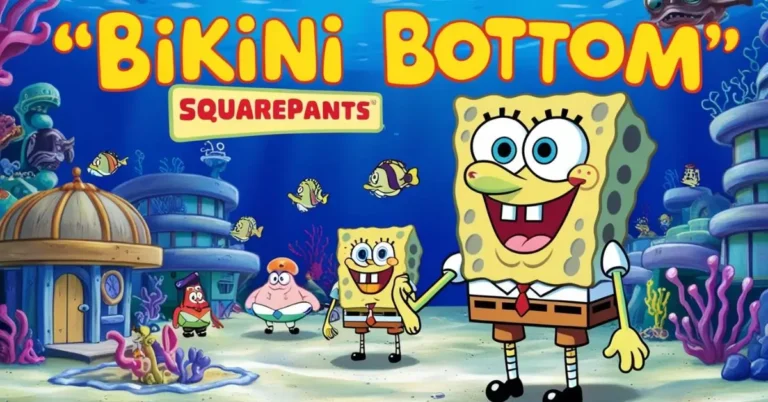Far below the sun-dappled waves of the Pacific, nestled comfortably on the seafloor, lies a community unlike any other on Earth—or more accurately, in it. Bikini Bottom, a name that evokes both nuclear-age anxiety and carefree leisure, is a paradox in polyp form. It is a city of contradictions, a vibrant, anarchic, and strangely functional society built on the twin pillars of relentless capitalism and unabashed hedonism. To the outside observer, it might appear as a nonsensical collection of pineapple-dwelling sponges and grumpy cephalopods, but a closer look reveals a profound, albeit absurd, commentary on the modern condition.
The beating heart, or perhaps the filtering system, of Bikini Bottom is its economy, and that economy is overwhelmingly dominated by the service industry. The iconic Krusty Krab isn’t just a restaurant; it’s a monument to free-market obsession. Its owner, Eugene H. Krabs, a crustacean so monetarily focused he literally emits a dollar-sign-shaped bubble when smelling currency, is the ultimate capitalist. His existence is a masterclass in profit maximization, from his legendary frugality to his exploitation of a willing and eager workforce. The Krusty Krab’s success with a single, dubious product—the Krabby Patty—speaks to the power of branding, secret formulas, and monopolistic practices in a town with seemingly no other food options.
Conversely, the failed enterprise of the Chum Bucket, located directly across the street, serves as a cautionary tale. Its owner, the cyborg-planktonic genius Sheldon J. Plankton, represents the frustrated innovator, constantly thwarted not necessarily by a inferior product (though chum is a hard sell), but by the established market dominance of his rival. His endless, elaborate schemes to steal the Krabby Patty formula are less the actions of a mere villain and more the desperate maneuvers of a startup forever trapped in the shadow of a corporate giant. This eternal struggle is the core economic drama of Bikini Bottom, a perpetual David-and-Goliath story where David is a microscopic socialist nightmare and Goliath is a red-shelled Scrooge McDuck.
And between them stands the workforce: the employee. SpongeBob SquarePants, the fry cook at the Krusty Krab, is the ideal worker in a system that doesn’t deserve him. His unbridled enthusiasm for his minimum-wage job, his pursuit of the elusive “Employee of the Month” award, and his genuine love for the art of burger-craft are both heartwarming and horrifying. He finds profound meaning in a role that, to his grumpy neighbor Squidward Tentacles, is a soul-crushing prison. Squidward, the clarinet-playing cashier, is the embodiment of disenchanted labor. He is every office worker counting down the minutes to five o’clock, every artist trapped in a day job, every individual whose dreams have been supplanted by the mundane necessity of earning a living. His misery, exacerbated by SpongeBob’s joy, completes the dichotomy of the modern workplace.
Yet life in Bikini Bottom is not all work. The city is a haven for extreme and often dangerous leisure. The residents engage in activities like “jellyfishing,” a pastime that combines the tranquility of butterfly catching with the high-voltage danger of tasering, and “bubble blowing,” which reaches levels of artistic and physical complexity comparable to extreme sports. Their hobbies reflect a world where the laws of physics are gentle suggestions, and the pursuit of fun is pursued with the same fervor as the pursuit of wealth.
The very fabric of Bikini Bottom society is held together by its unique social dynamics. Friendship here is tested, twisted, and ultimately triumphant. The bond between the optimistic SpongeBob and his simple, starfish best friend Patrick Star is the emotional core of the town. Their adventures, often predicated on a complete lack of common sense, showcase a loyalty that is unwavering in the face of cosmic stupidity. They build elaborate worlds out of cardboard boxes, misunderstand simple concepts to apocalyptic degrees, and yet, through it all, they remain inseparable. This pure, childish friendship exists alongside more complex relationships: the grudging, next-door-neighbor coexistence between Squidward and SpongeBob, the bitter rivalry between Krabs and Plankton, and the playful, sometimes dangerous, flirtations of Sandy Cheeks, the squirrel from Texas, whose presence introduces a element of surface-world science and bravado.
The environment itself is a character. The city’s architecture is a bizarre blend of the organic and the manufactured. Homes are carved from natural features like giant rocks and pineapples, while businesses and municipal structures are built from shipwrecks and human debris that have sunk from the world above. A discarded anchor becomes a public monument; a buried boot becomes a home. This creates a constant, subtle reminder of the surface world, a realm of vague and often misunderstood danger. The occasional visit from the “alaskan bull worm” or the terrifying presence of the “Dutchman’s Anchor” are existential threats that the citizens face with a remarkable blend of panic and resilience.
Ultimately, Bikini Bottom endures because of this resilience. The town is regularly subjected to near-apocalyptic events: a rogue mayonnaise spill, a sudden freeze, the wrath of a giant worm, or the chaotic magic of a Mermaid Man and Barnacle Boy villain. Yet, life always returns to normal. The Krusty Krab reopens, Squidward resumes his complaining, and SpongeBob greets the day with his signature, infectious laugh.
Bikini Bottom is more than just a cartoon setting. It is a surreal microcosm of our own world. It holds a mirror up to our own obsessions with work, money, and friendship, distorting the reflection just enough to make us laugh, but leaving the core truths unmistakable. It is a testament to the idea that community can flourish in the most absurd conditions, that joy can be found in the simplest tasks, and that even under the constant shadow of an anchor, life—in all its chaotic, frustrating, and beautiful forms—will always find a way to bloom like a sea flower in the sand.

